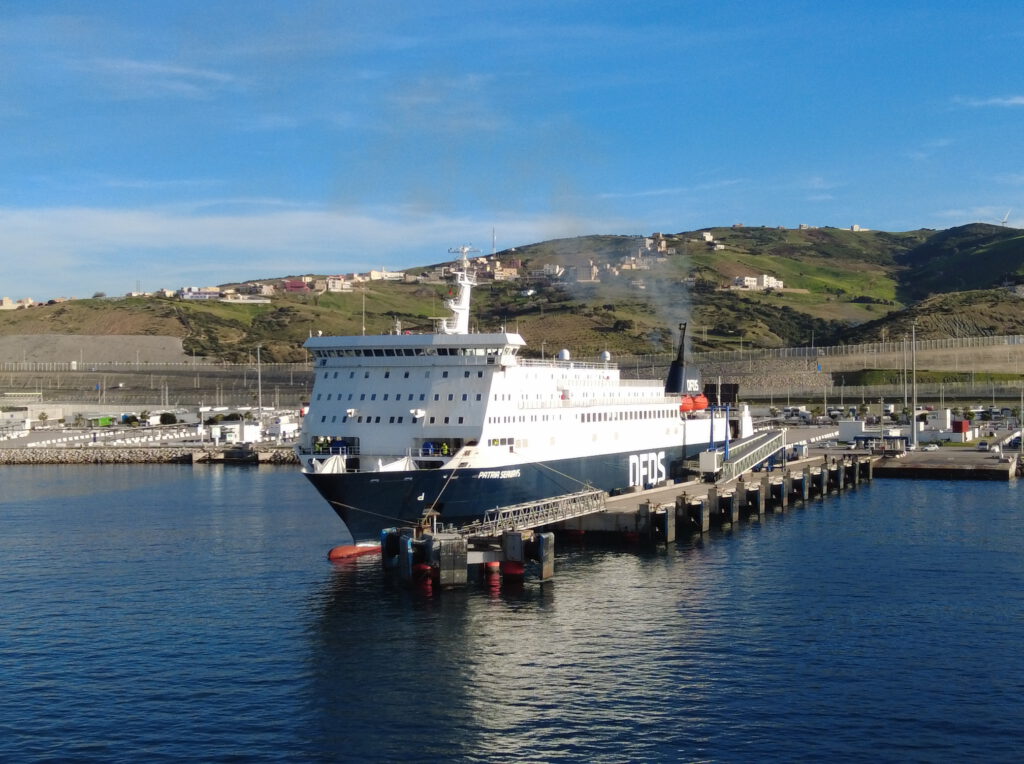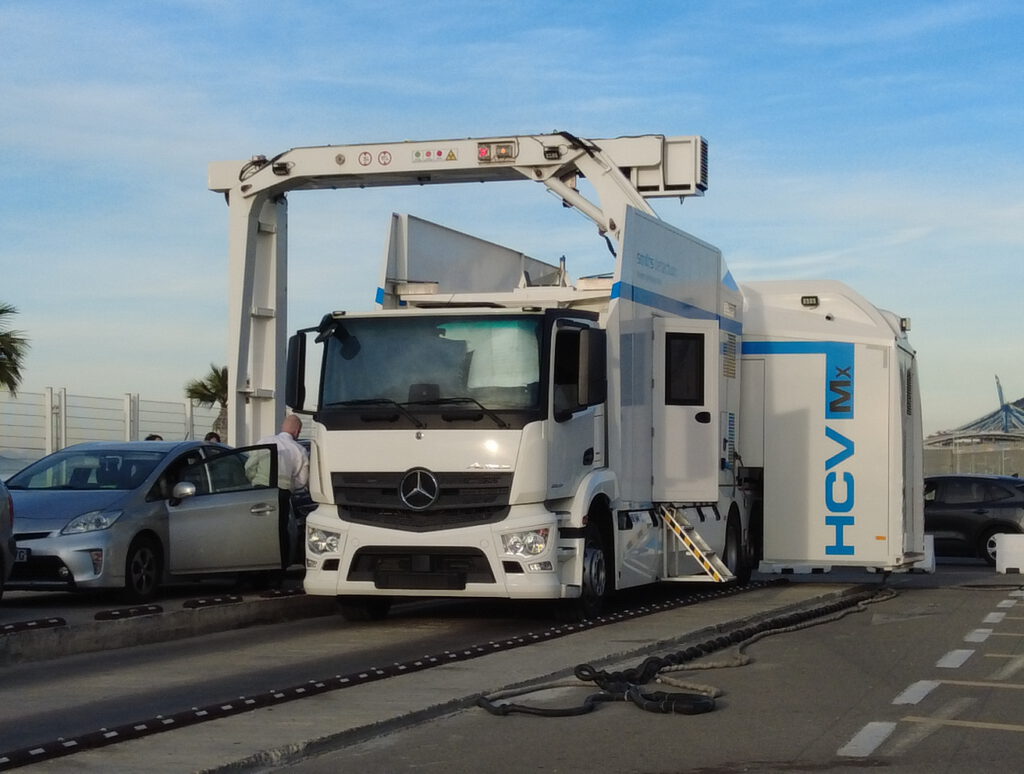Morocco is a magical destination to visit with a camper, but for some people, it might be a step too far. That’s understandable, of course, as exploring a new continent and venturing outside the EU requires a bit more effort. Bringing a dog to this African country, in particular, demands a lot of preparation, and sometimes it’s easy to get overwhelmed. On this page, we’ll explain everything to you about the journey with the ferry to Morocco, with a camper and how the entire process unfolds, including the vet and the PIF (Pet Importation Formalities).
Titertest dog

The preparations for the journey begin in the Netherlands. If you want to take your dog with you, make sure your loyal companion has a European Passport. The passport should match the chip in its neck, but we assume that this part is usually in order. At the vet, you must have your dog vaccinated against Rabies, a disease prevalent in Morocco. This is not necessarily required for Morocco itself, but it is crucial for the return to Spain.
A few years ago, there was a Rabies outbreak in Spain originating from Morocco. Due to this, the Spanish government strengthened regulations. Nowadays, in addition to vaccination, you must also have the so-called titer test done for the dog. You visit the vet for this, and they take a blood sample. The blood is sent to a laboratory, which checks if there are enough antibodies present. However, you can only do the test 30 days after the vaccination date. If the result is positive, the vet records it in the passport, but always keep the certificate with the result.
Vet in Spain
Before departing on the ferry to Morocco, you must make a visit to the vet. We depart from Algeciras and go to ‘Centro Veterinario Brulina‘ for this purpose. Here, a general health certificate is provided for your dog, and they ensure everything is in order. The vet will send the information to the PIF, an office in the port. Remember, the certificate is only valid for 24 hours, so it’s wise to depart for the port in a timely manner.
Requirements for the visit to the vet include:
- European pet passport
- Titertest results
- Ticket ferry
- Passport dog owner
- The camper’s registration document
Puesto De Inspeccion Fronterizo (PIF)
Finally, you need to visit the Puesto De Inspeccion Fronterizo, commonly known as the PIF, in the port. Sometimes it can be confusing because Carlos says an appointment is not necessary, but the vet told us it is. We called the PIF to ask if it was necessary, and they told us it was not needed for us since we were coming directly from the vet. However, if you want to be sure, you can call the PIF at the following phone number: 956989068.
At the vet, you received a form with the health declaration. You also get the so-called SEX/GAN number, which you must present together with the declaration at the PIF. They will scan it quickly, and after 15 minutes, you are back outside. You will then receive the form below, and you can proceed to the entrance of the port.

Ferry tickets Morocco Carlos
The only way to reach Morocco with a camper is by ferry. Ideas for constructing a bridge or tunnel have been proposed, but implementation has never materialized. There are several ferries you can take, but the most convenient option is from Algeciras. From this port, you can choose to take the ferry to Tanger-Med or the Spanish exclave, Ceuta. The disadvantage of Ceuta is that you have to cross the border by land, which often takes more time.
There are a few places where to buy tickets in Algeciras, but we decide to go to Carlos his office, Viajes Normandie. At first glance, it seemed quite chaotic, and the owner Carlos doesn’t speak English. Fortunately, he has a few employees who speak English and are extremely friendly. A round-trip ticket cost us 280 euros here. Quickly checking online, we concluded that oddly enough, this is cheaper than the ferry website of Directferries. Additionally, the ticket is an open-return ticket, meaning we don’t have a fixed departure date.
It’s also delightful that Carlos is incredibly hospitable. We receive some treats while waiting, and upon departure, we are gifted a cake and a bottle of wine. Finally, we were allowed to leave our drone for free until our return, which alleviates a lot of concerns for us. However, please note that a drone is strictly prohibited in Morocco, so leave it behind in Spain.
The harbour proces

The final step is, of course, driving to the port with the camper. Assuming you are just coming from the PIF, follow the signs for the Tanger ferry. Pay attention, as it gets a bit tricky here. At the last roundabout, you might think you need to turn left, where the ferry port for Ceuta is also located, but you actually go all the way around the roundabout. Then, you take the right turn, and there’s a very small sign and gate to the Tanger-Med ferry port.
On the Spanish side of the ferry terminal, it’s not very exciting. After an hour of waiting, we’re allowed to drive onto the ferry. On the ferry, you need to pick up a form at the counter, which you must fill out immediately. This form includes some details from your passport but also, for example, a residence address in Morocco. For this address, we filled in the details of the first camping site in Asilah. Then, you take the slip to the police, who are somewhere on board the ship (the location varies depending on the ferry).
Arrival port Tanger-Med

After a journey of an hour and a half, you arrive at the port of Tanger-Med. However, the port is about 30 kilometers away from the city of Tangier. Here, as you disembark from the boat, your passport is immediately checked. A bit further, you reach the customs area, where all vehicles are lined up. There’s a large truck with a scanner that passes over all vehicles to check if there’s anything suspicious inside. Then, you drive a bit further to the last station. The details from your passport and vehicle registration document are filled in again, and they briefly inspect the interior of the camper. If you’re allowed to proceed, you’ll receive a small ticket, which serves as a Moroccan vehicle registration document; do not lose this!
Money exchange Tanger-Med
Once you pass through customs, you arrive at a parking area where you can exchange money. The exchange rate at all offices is 1 euro = 10.5 dirhams. If your car is not insured in Morocco, you can also get local insurance here. Make sure to have at least 100 dirhams with you before you continue driving, as the highway towards Rabat is a toll road. You’ll quickly notice many beggars along the road; just drive past them as their intentions may not be clear. The first kilometers in Morocco may take some getting used to but offer a beautiful adventure.
How to get back to Spain
The return journey to Spain is actually the most critical process for your faithful four-legged friend. Years ago, there was a significant outbreak of Rabies in Spain, originating from Morocco. Fortunately, the Spanish government managed to resolve this, but it was not to be repeated. As a preventive measure, it has been established that upon your return, you must present a valid titer test result for your dog. Thankfully, during the outbound journey, all paperwork is thoroughly checked, serving as a warning before departure to Morocco if something is amiss.
However, if, for example, you lose your paperwork and fear that your dog cannot return, we have heard rumors about an alternative route. A German couple managed to smuggle a street dog from Morocco into Spain. If you cross the border from Morocco to the Spanish exclave of Ceuta, there is allegedly no dog inspection. Please note, this information is based on hearsay and not our own experience. Currently, we are still in Morocco, and we have yet to experience the journey back to Spain. This section is solely based on what we could find online. We will update it with our own experience once we return to Spain.
We hope that we have answered all your question according the ferry to Morocco and taking the dog with you. Take a look at one of our other blogs over Marokko, maybe you will find some inspiration!